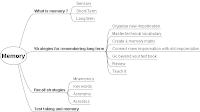TFY Chapter 7 Evaluations
Summary
1. Evaluations make judgments about worth on the basis of standards that may be conscious or unconscious.
2. Evaluations can help us react quickly to situations where our survival is at stake. But this same tendency to evaluate first instead of last may be problematical when we don't reexamine our evidence to make sure our evaluation is warranted.
3. Evaluations are not facts. Factual reports keep distinction between facts and evaluations clear.
4. Premature evaluations are hasty evaluations that contain unexamined or faulty support.
5. Feelings and expectations affect both our perceptions and evaluations.
6. All of us need to learn how to make fair and sound evaluations since the affect our lives constantly. Experts are those who have a reputation for offering skilled and reliable evaluations.
7. Connotative words convey evaluations that can be used to sway our opinions. When we think critically, we recognize how those connotations affect our feelings so that we can choose or not choose to accept the opinions they contain.
8. Evaluations are used in advertising and journalism to persuade us, sometimes hypnotically, to make associations with products and purchase them.
9. Critical thinking requires that we stay alert to manipulative advertising techniques that are most effective when can be enticed to enter into a trance state.
10. Propaganda employs many sophisticated manipulative techniques of persuasion. One of these is the use of hidden evaluations. A critical thinker knows how to recognize and detach from the influence of propaganda.
























